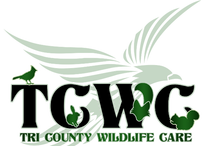Rat-a-tat-tat, rat-a-tat-tat.
Those $!&% woodpeckers are pecking at my house again! What can I do?
Woodpeckers with their striking black and white plumage and sometimes red heads and clown faces can be a nuisance. Their natural behavior is to peck at trees for insects, store acorns or make nests or roosting sites. Sometimes they mistake your house for a tree and peck holes in your siding.
There are three reasons woodpeckers might peck at your house. Foraging is commonly suggested as a reason but is usually incorrect. Please check areas woodpeckers are using for insect damage, make repairs and see below for methods of exclusion. Next is drumming to announce territoriality usually during the breeding season from February through July. Songbirds sing during breeding season and woodpecker drum. The last reason is the destructive activity of excavating a nest or roosting site.
Every woodpecker makes a roosting cavity, generally in a tree. That’s every woodpecker. Here in the foothills, many of us have a lot of trees on our property. Sometimes the trees die and the first thought is to remove them. Don’t do that. Woodpeckers like “snags” or old dead trees for roosting sites. So leave that dead tree, preferably about 15 feet of it, just for the woodpeckers. Maybe they will use the tree instead of your house.
If they haven’t already started on your house but they are in the vicinity, create an invisible barrier to keep them away. Hang lengths of monofilament nylon (or fishing line) a few inches out from the undersides of the eaves. Space them every four to six inches along the side of your house and reaching almost to the ground. Use a metal washer on the end as a weight. The lines create a screen that will keep the woodpeckers away but will essentially be invisible to you and your neighbors.
If you don’t mind a solution that is more obvious, hang Mylar streamers (from your local feed store, hardware or party store) about 10 inches apart covering the damaged area. Strengthen the tape by attaching duct tape or nylon packing tape to each end. Tack or nail to the soffit just under the gutter, twist the tape six or seven times and then attach at the bottom but leaving enough slack for the tape to move in the breeze. The movement of the streamers will keep them away.
Bird’s Away Attack Spider is a battery-operated device that is activated by sound. An approaching woodpecker will cause the black spider to drop down an 18 inch string and make a loud noise. The woodpecker is scared away and the spider is then automatically retracted up the string.
If the woodpeckers are attacking your house, the first step is to check for a nest. It is illegal to damage or remove a bird nest. If no nest exists yet, stop them from returning by hanging a large sheet of plastic over the area of the nest or where they have attacked. They cannot get a foothold on the slick plastic. This only buys you a little time to erect a properly sized birdhouse or nesting box over the area they are excavating. A bluebird house is perfect for a downy woodpecker; you will need a larger one for flickers and other larger woodpeckers. If the nest is already in place, give them time to rear their young and let the young disperse. Then follow steps above to prevent them from returning.
The bird house should have a rough finish so they can get a good grip on it. Remove any perch and fill with wood shavings (like hamster nesting material). The shavings will be excavated by the woodpeckers and dropped outside the box, part of their natural behavior, instead of them pulling out your insulation. If you clean the box after each season, they may use it again the next year.
Woodpeckers are great to have around. They eat lots of beetles and other garden pests. We just need to help them be good neighbors.
Tri County Wildlife Care, a local nonprofit started in 1994, is dedicated to the rescue and rehabilitation of our native wildlife and helping our community live in balance with wildlife. They envision a world where wildlife and people thrive together. For more information call (209) 283-3245, or visit pawspartners.org.
Those $!&% woodpeckers are pecking at my house again! What can I do?
Woodpeckers with their striking black and white plumage and sometimes red heads and clown faces can be a nuisance. Their natural behavior is to peck at trees for insects, store acorns or make nests or roosting sites. Sometimes they mistake your house for a tree and peck holes in your siding.
There are three reasons woodpeckers might peck at your house. Foraging is commonly suggested as a reason but is usually incorrect. Please check areas woodpeckers are using for insect damage, make repairs and see below for methods of exclusion. Next is drumming to announce territoriality usually during the breeding season from February through July. Songbirds sing during breeding season and woodpecker drum. The last reason is the destructive activity of excavating a nest or roosting site.
Every woodpecker makes a roosting cavity, generally in a tree. That’s every woodpecker. Here in the foothills, many of us have a lot of trees on our property. Sometimes the trees die and the first thought is to remove them. Don’t do that. Woodpeckers like “snags” or old dead trees for roosting sites. So leave that dead tree, preferably about 15 feet of it, just for the woodpeckers. Maybe they will use the tree instead of your house.
If they haven’t already started on your house but they are in the vicinity, create an invisible barrier to keep them away. Hang lengths of monofilament nylon (or fishing line) a few inches out from the undersides of the eaves. Space them every four to six inches along the side of your house and reaching almost to the ground. Use a metal washer on the end as a weight. The lines create a screen that will keep the woodpeckers away but will essentially be invisible to you and your neighbors.
If you don’t mind a solution that is more obvious, hang Mylar streamers (from your local feed store, hardware or party store) about 10 inches apart covering the damaged area. Strengthen the tape by attaching duct tape or nylon packing tape to each end. Tack or nail to the soffit just under the gutter, twist the tape six or seven times and then attach at the bottom but leaving enough slack for the tape to move in the breeze. The movement of the streamers will keep them away.
Bird’s Away Attack Spider is a battery-operated device that is activated by sound. An approaching woodpecker will cause the black spider to drop down an 18 inch string and make a loud noise. The woodpecker is scared away and the spider is then automatically retracted up the string.
If the woodpeckers are attacking your house, the first step is to check for a nest. It is illegal to damage or remove a bird nest. If no nest exists yet, stop them from returning by hanging a large sheet of plastic over the area of the nest or where they have attacked. They cannot get a foothold on the slick plastic. This only buys you a little time to erect a properly sized birdhouse or nesting box over the area they are excavating. A bluebird house is perfect for a downy woodpecker; you will need a larger one for flickers and other larger woodpeckers. If the nest is already in place, give them time to rear their young and let the young disperse. Then follow steps above to prevent them from returning.
The bird house should have a rough finish so they can get a good grip on it. Remove any perch and fill with wood shavings (like hamster nesting material). The shavings will be excavated by the woodpeckers and dropped outside the box, part of their natural behavior, instead of them pulling out your insulation. If you clean the box after each season, they may use it again the next year.
Woodpeckers are great to have around. They eat lots of beetles and other garden pests. We just need to help them be good neighbors.
Tri County Wildlife Care, a local nonprofit started in 1994, is dedicated to the rescue and rehabilitation of our native wildlife and helping our community live in balance with wildlife. They envision a world where wildlife and people thrive together. For more information call (209) 283-3245, or visit pawspartners.org.


